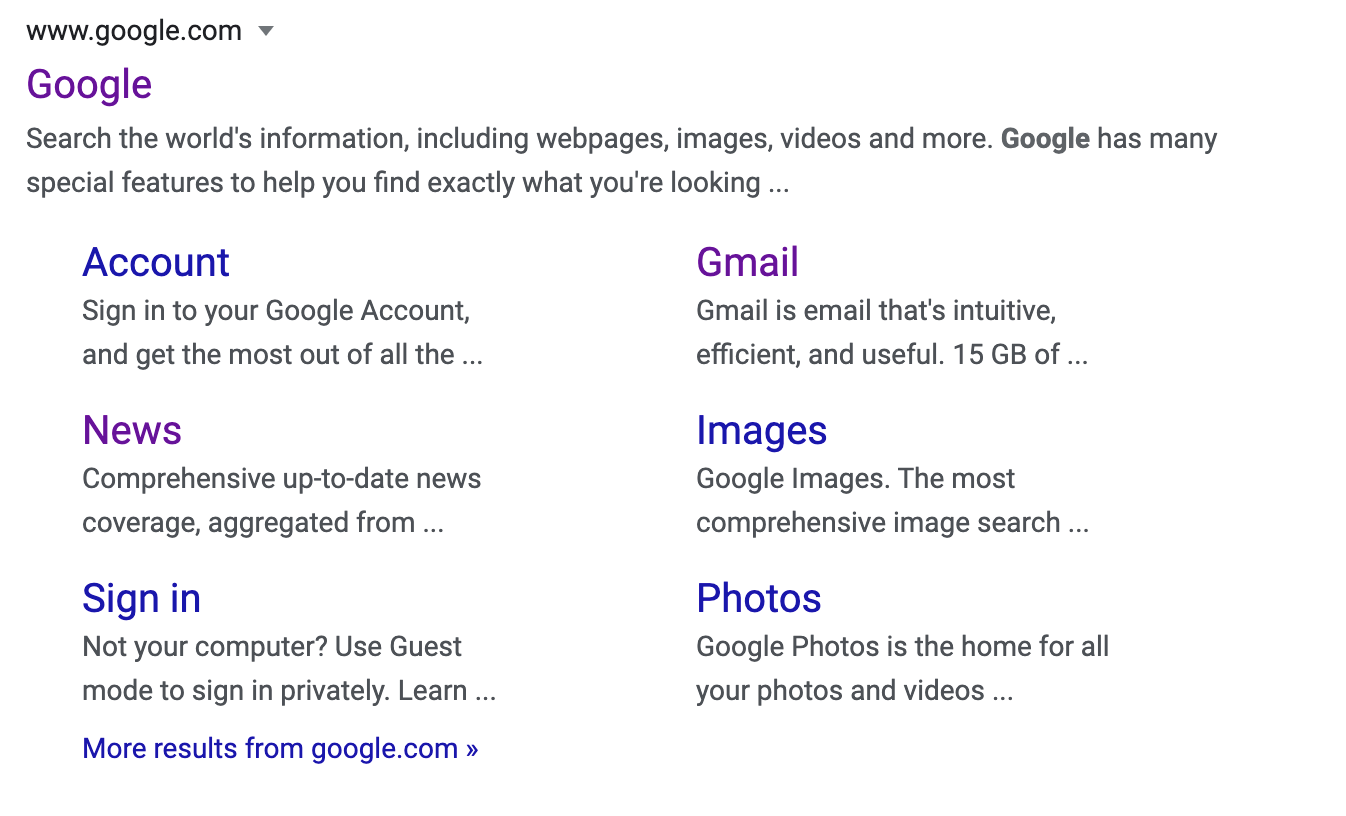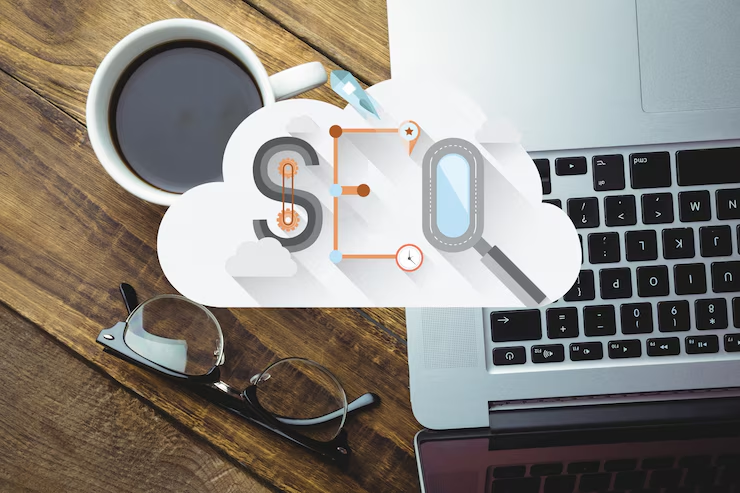Here’s a question, ready? When was the last time you visited page 2 of a Google Search? According to Statista.com, the World Wide Web currently hosts close to 1.72 Billion websites – that’s a lot of options! Isn’t it? However, according Sistrix.com, only the top 3 results on a Google search receive the highest click through rates (or CTR) – 55% to be exact. The importance of an optimized and user-friendly website cannot be stressed enough. Organic search is the primary source of traffic for a website, whether this be through Google, Bing, Yahoo, or any other popular search available to use. A new decade is here and our dependability on the internet grows larger every day. It’s more evident in 2021 than ever before, due to shifting patterns in human behavior caused by the pandemic. Search has constantly been evolving. Big tech companies have built systems of machine learning responsible to make search even more powerful. Having a website optimized for exactly what search engines look for is essential. The more search and user-friendly website you have, the higher your CTR will be. So, what will a well-optimized website mean for you? In simple words – credibility and authority. The more legitimate you are, the more credible you are, which means claiming authority of a higher importance online. To really rise to the top, it is important to cater to how search engines work and what they look for in a website to rank higher in their database. Here are some reasons you will really want to invest time and/or money into optimizing your website.
Visibility on Search Engines with SEO
As aforementioned, search engines use machine learning by using algorithms to look for specific data within websites to calculate values and trends. These trends could range from something simple like “How many people visited a particular link?” to something more complex like “what’s the most common position of mouse pointers on a web page?”. The websites that tick most of a search engine’s algorithmic queries will be the ones recommended most often. There are multiple things you can do to tick those boxes off. First and foremost, make sure you have clear and concise meta description. A meta description is a two to three liner description below a result’s link, such as below: Keywords help users find what they want, but more importantly, they tell a search engine to include information from your website into their queries. However, many forget to research and analyze the trends of words and phrases people actually use during search. Adding some keywords from actual search terms (the ones typed into a search box by users) can influence more traffic as your meta description could match exactly what a search engine will be looking for. This also goes the same for images and photographs. To a computer, photos are merely codes of 0s and 1s. Adding precise keywords in alt text (alternate text) will give meaning to images in a form that computers can understand.

Convert Traffic into Sales with UI
User interface, or UI (the way your website looks), is one of the biggest drivers of emotional impressions. Having a beautiful website can automatically gain you credibility by your visitors, in turn converting their impressions into interest for your content. Investing time and effort into making your website look clean will be particularly effective. In fact, The Weather Channel increased their conversions by 225% by simply simplifying their home page. Simplifying is a trend used in most modern web pages as they can reduce page loading times, especially for visits through mobile phones. Reducing a 1 second delay can result in 7% increase in conversions! Adding large in size and high-quality images with appropriate descriptions will reduce the latency between thinking time and decision making (be careful though, too high of a quality will increase load times). Combining these with easy-to-see, larger buttons (especially effective for touch displays) with attractive Call to Actions (CTA) will only add to the benefits. In addition, images with people create emotional connections and can set your visitors off to a good start right from your home page (keep in mind though, the people you choose to have on images must be of the right audience you aim to target).
Accessibility with responsive websites and UX
User interface is always paired with great User Experience (UX). User experience is the art of making your visitors feel comfortable and directing them to what they are looking for with least resistance. Majority of organic search comes through Google search on mobile phones, so accessibility of your website is very important. User-friendly navigation is the key. Making your website responsive to fit in any screen will help you save time and money too. Most website creation tools available online, such as Shutterstock, Wix, or Webflow do that automatically for you! If you have, or plan to include a shopping cart on your website, letting customers check out as guests can increase check outs by up to 50%! Furthermore, highlighting sale information (eg: making it easier, more attractive and eye catching to see) will draw a visitor’s attention towards where you really want it to go – the add to cart button. Corkscrew Wine increased conversion of a sale product by 148.3% by simply highlighting their sale information as compared to other content on their website. There is also a newer emerging trend: dark modes. Studies show that darker backgrounds with contrasting text color are easier on user’s eyes, especially in darker environments. If your website consists of a lot of reading material, or if you are an online magazine for example, an option to turn dark mode on will most definitely prove to be a game changer – even more so if you have it in your own mobile application!
Hierarchy structure
A proper structure improves your website by design, user experience, and user interface, meanwhile also grabbing a search engine’s attention. By directly cross matching information from a search term and your website, a search engine will select the site link of the particular web page (any page) within your website containing the most relevant information and provide it to users, forming a direct path

As in Google’s example above, six most popular site links are shown, which brings visitors closer to what they are looking for with the least number of clicks (remember, least clicks = least resistance).
A proper structure also means making use of the multiple ‘Heading’ options available (H1, H2, H3, H4, H5, and H6), so your information can be exactly in the format search engines’ algorithms look for.
Moreover, we can’t stress this enough – having clear and concise information will help save space on your web page, making it shorter. The direct benefit of this offers a feeling of moving faster while absorbing more information, allowing visitors to navigate through an added number pages within your website (remember to add more buttons/links to other interesting content on your website at the bottom).
Credibility and Authority
Last but not the least, as we mentioned earlier, doing everything right will show professionalism in the demeanor of your website, gain a search engine’s trust, and give you authority over your competitors.
However, it doesn’t stop there. Using well-known trust seals can be of a huge benefit. For example, having a trusted worldwide entity, such as Paypal, Visa, or MasterCard will provide added legitimacy to your reputation.
People trust endorsements of popular media, such as ‘The New York Times’, or ‘The Wall Street Journal’, amongst many others. If you have been mentioned in an article or have been interviewed, you will be allowed to add their endorsement onto your website (with their permission of course).
The same goes for your customers’ testimonials! They show proven experiences of people with your product or service and help making a decision easier when it comes to new prospective customers. Product rating stars are another way of adding trustworthiness.
A Frequently Asked Questions (FAQs) page and live chats (or easy contact information), in addition, will give users a reason to spend more time on your website, increasing the ‘average time spent’ statistic of your website.
Having an optimized and user-friendly website, as we discussed, will not only make it easier to your customers, but rank you higher amongst your competitors.
We always recommend A/B testing to analyze effects of any changes you make. More often than not, we have seen small changes like rearranging words in a sentence or rewriting sentences to communicate more precise information to be a game changer in increased website traffic.
We hope this article has helped you gain some more understanding of how search engines query data and rank results. If you have any questions or need some more help in designing your website, do not hesitate to contact us!




